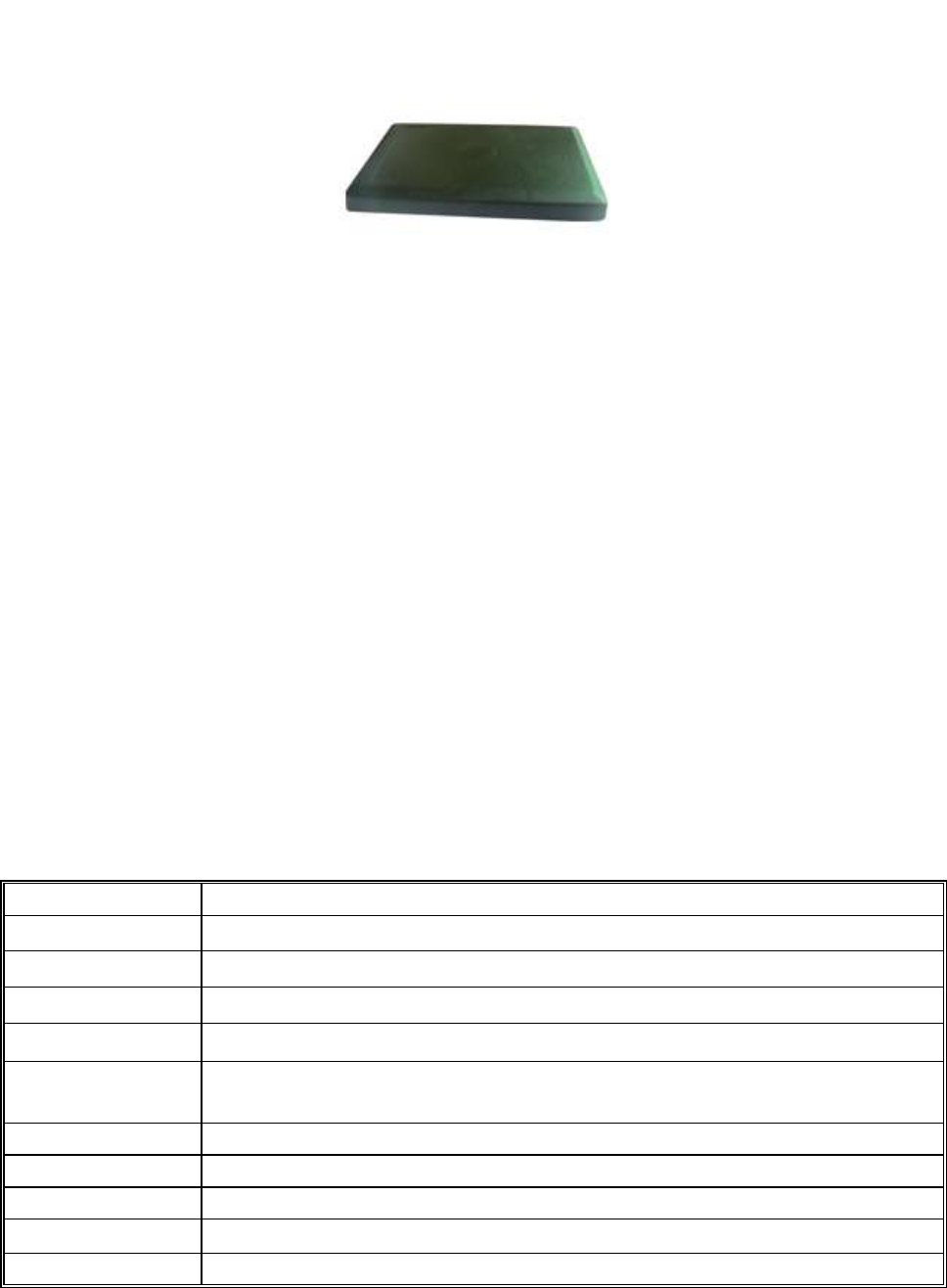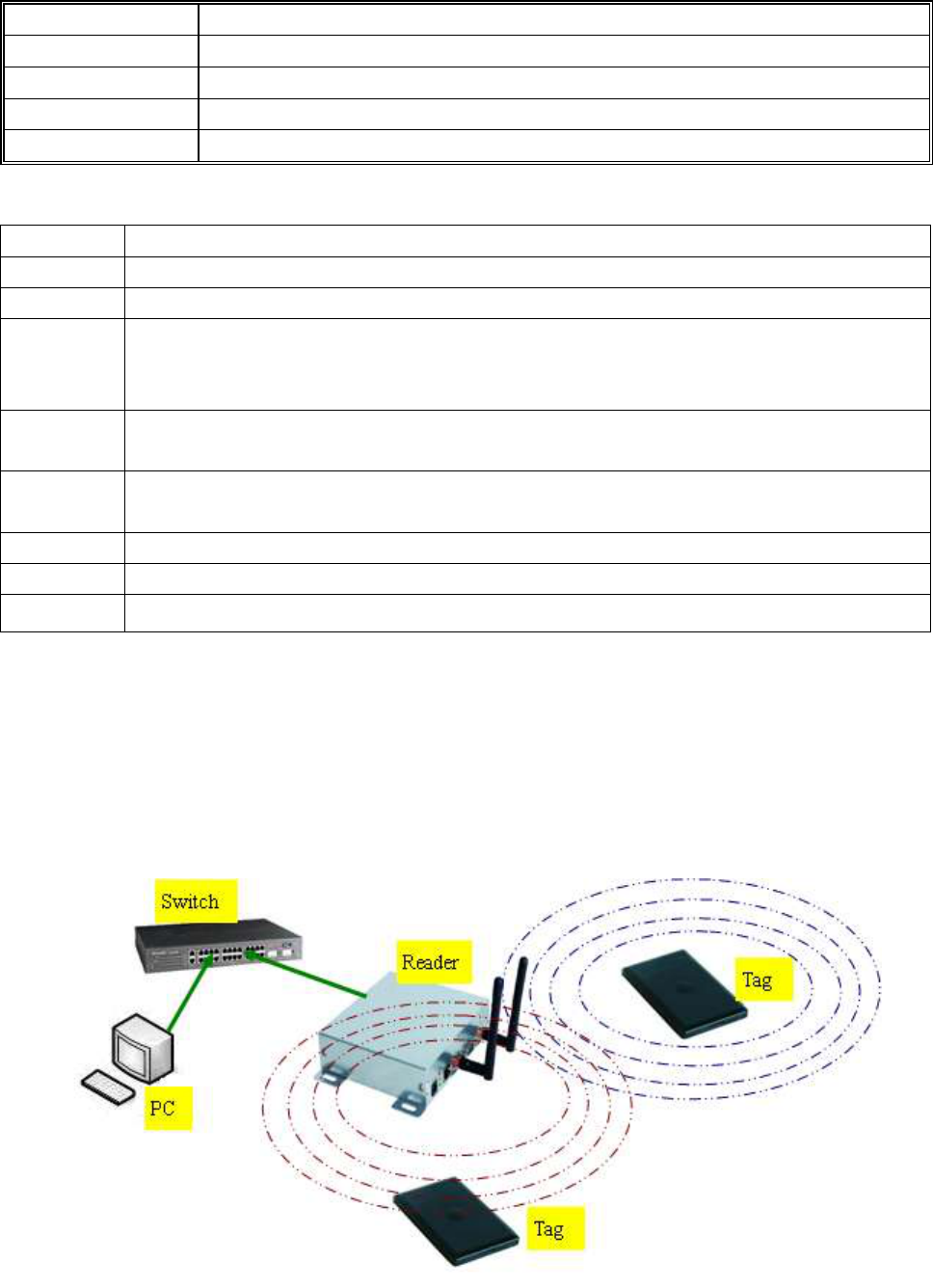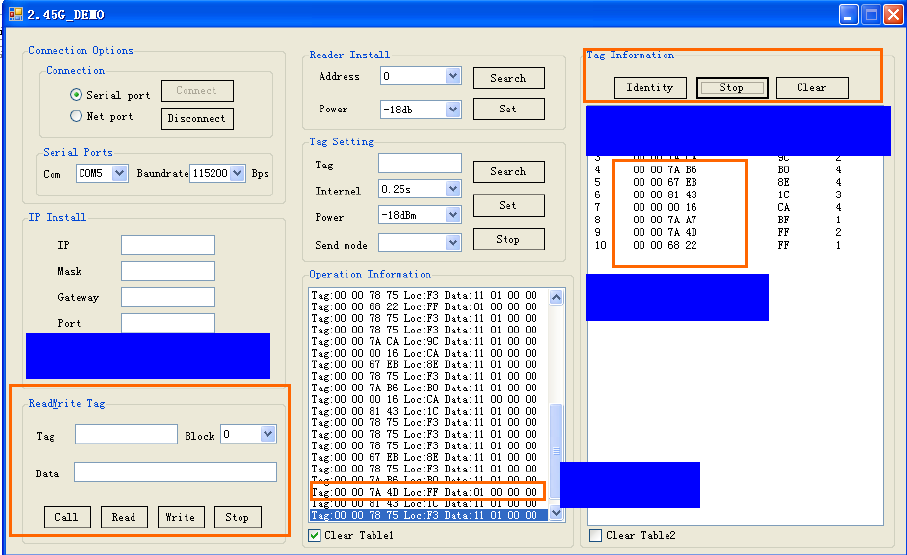MARKTRACE MR38 2.4G Tag User Manual
SHENZHEN MARKTRACE CO., LTD. 2.4G Tag Users Manual
Users Manual

2.45GHz Active tag introduction
1. The Appearance
2. Introduction
This tag is a 2.4GHz active tags, matched with MR3001A reader, it can be written to data and read out data, it
has 240 Bytes memory for users to store data. It uses two button lithium batteries to supply the source, and it has a
long lifetime and change battery is easily. At normal status, the tag is in sleep mode to save battery, when
MR3001A is working, it will wake up this tag, then the tag will send its ID to reader to finish the communication.
3. Applications and Features
●MR3820A active tag can be used in location system or personnel registry, and even conference attendance, etc.
●It should be matched with MR3001A reader to use in the real application
●Independent sending and receiving frequency, has a strong anti-interference ability
●The maximum indentify range can reach more than 80m(depend on the antenna of reader and the tag’s sending
power), ultra-wide frequency band design
●Multi-tag indentify at the same time (more than 50/s) while it can not be affected and limited by the amount of
tag within the antenna’s indentify range.
●Large memory for users to store data
4. Specifications
Model name
MR3820A
Card shape
Card
ID type
4 byte ID
Working frequency
2.44GHz
Modulation
GFSK
Sending power
0dBm -6dBm -12dBm -18dBm(0dBm is the maximum and -18dBm is the
minimum, the power can adjust the identify range) default is 0dBm
Sending time interval
0.25s, 0.5s, 1s, 2s, 4s (default is 1s)
EEPROM size
240 bytes storage capacity
Inductive mode
Auto-inductive
Identify range
3-80M
LED indication
When using the reader call a tag, the Led on tag will be twinkling

Material
PET, heat-resistance, water-proof
Dimension
87mm*55*mm5.5mm
Weight
20g
Battery
2 pcs 3.3V built-in button lithium
Use life
3 years
5 Tag memory
Address
Storage content
Addr0~3
store the tag’s ID
Addr4~7
store the working parameters of tag
Addr4
store the interval time of tag automatically detect (automatically sending signal), 0x10,0x11,
0x12,0x13,0x14 are separately related to 0.25s,0.5s,1s,2s,4s(sending time interval);the
default is 1s
Addr5
the sending power of tag, 0x10 ,0x11 ,0x12 ,0x13 are separately related to
-18dBm,-12dBm,-6dBm,0dBm; the default is 0dBm.
Addr6
setting the tag’s sending mode (passive or active, 0xAA is active, others values are for locating
tag)
Addr7
reserved
Addr8~15
reserved
Addr16~255
user data
6. Usage of MR3820A tags
In real application, the system need MR3001A reader and MR3820A tags, and also a switch and PC is needed to
exchange the data. See following picture, reader wake up the sleepy tags, and then tag will automatically send its
ID and status information to reader. One tag will mark one person or goods. It can tell us the position of person or
goods by the reading procedure. If the tag is stayed within the reader’s reading range, it will be identified by the
reader.

7. Use Demo software
2.45GDemo.exe is supplied to show the communication between reader and tags
The reader has com port and Ethernet port to connect with PC. The default sending time interval is 1s with the
sending power is 0dBm.
Here we connect it with com port. Following show the result of identifying.
Start or stop tag identify
Tag ID display
Tag records
Write or read tag data
FEDERAL COMMUNICATIONS COMMISSION
INTERFERENCE STATEMENT
This equipment has been tested and found to comply with the limits for a Class B digital device, pursuant to Part
15 of the FCC Rules. These limits are designed to provide reasonable protection against harmful interference in a
residential installation. This equipment generates, uses and can radiate radio frequency energy and, if not installed
and used in accordance with the instructions, may cause harmful interference to radio communications. However,
there is no guarantee that interference will not occur in a particular installation. If this equipment does cause
harmful interference to radio or television reception, which can be determined by turning the equipment off and
on, the user is encouraged to try to correct the interference by one or more of the following measures:
-- Reorient or relocate the receiving antenna.
-- Increase the separation between the equipment and receiver.
-- Connect the equipment into an outlet on a circuit different from that to which the receiver is connected.
-- Consult the dealer or an experienced radio/TV technician for help.
This device complies with Part 15 of the FCC Rules. Operation is subject to the following two conditions: (1) This
device may not cause harmful interference, and (2) this device must accept any interference received, including
interference that may cause undesired operation.
CAUTION:
To assure continued FCC compliance:
Any changes or modifications not expressly approved by the grantee of this device could void the user's authority
to operate the equipment.